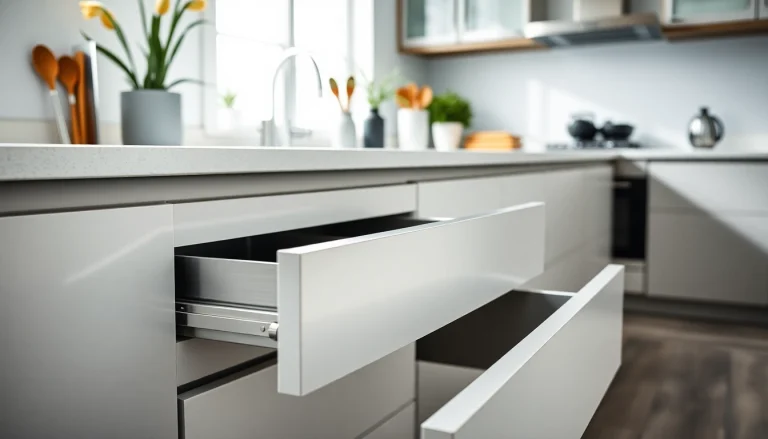
Understanding Core Aeration
What is Core Aeration?
Core aeration is a critical lawn care technique that involves removing small plugs of soil from the lawn, creating openings that allow air, water, and nutrients to penetrate deeper into the ground. This process is essential for enhancing soil health, facilitating better grass growth, and mitigating the adverse effects of soil compaction. When soil becomes compacted, the roots of grass struggle to grow, leading to a less vibrant lawn. By utilizing a core aeration method, you can significantly improve the overall health of your lawn.
How Core Aeration Works
Core aeration utilizes a machine known as a lawn aerator to perforate the soil. This machine pulls out cylindrical plugs, typically about ½ to ¾ inch in diameter, and 2 to 4 inches in depth, which are then deposited on the soil surface. By creating these holes, core aeration reduces soil compaction and promotes more efficient exchange between the soil, atmosphere, and grassroots. The removed soil plugs also decompose and return beneficial nutrients back into the lawn over time, enriching the soil even further.
Benefits of Core Aeration for Your Lawn
The benefits of core aeration go beyond mere aesthetics. Let’s explore some of its considerable advantages:
- Improved Soil Structure: Core aeration alleviates compaction, resulting in looser, healthier soil that is more conducive to root growth.
- Enhanced Water Absorption: With improved soil structure, water can penetrate deeper and more effectively, reducing runoff and water waste.
- Better Nutrient Uptake: By creating channels for nutrients, fertilizers can more efficiently reach grass roots.
- Increased Air Exchange: More airflow in the soil results in a healthier ecosystem, fostering the growth of beneficial microorganisms.
- Thatch Reduction: Core aeration helps control thatch build-up, which is a layer of dead grass and roots that can suffocate the lawn.
When to Perform Core Aeration
Best Seasons for Core Aeration
Timing is critical when it comes to core aeration. The best seasons to aerate depend largely on the type of grass you have:
- Cool-Season Grasses: The ideal times for core aeration are early spring or early fall when these grasses are in their peak growth stages.
- Warm-Season Grasses: For warm-season grasses, late spring through early summer is the best time to aerate, allowing the grass to recover swiftly from the operation.
Signs That Your Lawn Needs Aeration
Recognizing when your lawn needs aeration can save you time and resources. Look for these signs:
- The ground feels hard and does not give way easily underfoot.
- Water pools on the surface rather than seeping into the ground.
- Thin, patchy areas of grass that appear weak or unhealthy.
- Soil that resembles a solid mass with minimal air pockets.
- A buildup of thatch that exceeds ½ inch thick.
Frequency of Core Aeration
The frequency of core aeration depends on several variables, including the type of grass, soil conditions, and foot traffic:
- High-Traffic Areas: These lawns may benefit from annual aeration to alleviate compaction.
- Moderate Use: Aerating every two years is usually sufficient for lawns with standard use.
- Lesser Use: For low-traffic lawns, aerating every three to four years is adequate to maintain health.
How to Core Aerate Your Lawn
DIY Core Aeration Techniques
Core aeration can be performed as a DIY project if you have the right tools and knowledge. Here are some stepping stones to consider:
- Choose the right time based on your grass type.
- Water your lawn the day before aeration to soften the soil.
- Consider using a core aerator that can be rented from local home improvement stores.
Choosing the Right Equipment
The effectiveness of your aeration significantly depends on the equipment used. There are two main types of aerators:
- Spike Aerators: These machines simply poke holes into the ground, which can worsen compaction in certain situations.
- Core Aerators: These are the preferred choice as they remove plugs of soil, allowing for a more considerable impact on soil structure.
Step-by-Step Core Aeration Process
Here’s an easy-to-follow guide on executing core aeration:
- Prepare the Lawn: Mow to a shorter height (around 2 to 3 inches) and remove debris like sticks and leaves.
- Water the Lawn: Ensure the lawn is moist but not saturated the day prior to aeration.
- Run the Aerator: Begin aerating in one direction, then go over in a perpendicular direction for thorough coverage.
- Leave Soil Plugs: Allow the soil plugs to remain on the surface as they decompose and enhance nutrient content.
- Post-Aeration Care: Begin watering lightly to assist recovery. Fertilize or overseed post-aeration if desired.
Aftercare Following Core Aeration
What to Do After Aerating
Post-aeration care is vital for ensuring your lawn reaps the maximum benefits. Here are steps to follow:
- Water the lawn to facilitate recovery from the disturbance.
- Avoid heavy foot traffic for a week to allow the lawn to heal.
- Monitor lawn health and address any areas that appear weak promptly.
Combining Core Aeration with Overseeding
Combining core aeration with overseeding is an effective strategy to enhance lawn density and health:
- The holes created by aeration are the perfect environment for new seeds to settle and germinate.
- Consider using a quality seed blend suitable for your grass type for optimal results.
- Spread the seed evenly across the aerated area and water lightly after application.
Maintaining a Healthy Lawn Post-Aeration
Maintaining your lawn’s health after aeration involves regular care:
- Keep your lawn adequately watered during dry spells.
- Apply a balanced fertilizer to boost recovery and growth.
- Continue to mow at the recommended height for your grass type.
- Observe lawn growth and adjust watering and care as necessary.
Core Aeration Services and Costs
Hiring a Professional for Core Aeration
If DIY is not your forte, hiring a professional service can be a valuable option. Professionals possess advanced equipment and an expert understanding of the best practices, often leading to superior results. Be sure to request quotes from various companies and inquire about their aeration process.
Cost Factors for Core Aeration Services
The costs associated with professional core aeration can vary based on several factors:
- Size of the Lawn: Larger lawns will naturally incur higher costs.
- Condition of the Lawn: Lawns requiring additional services (like overseeding) may be quoted higher.
- Location: Service regions may have differing rates based on local demand and operating costs.
Potential Savings with DIY Core Aeration
Performing core aeration yourself can result in significant savings compared to professional services. Renting an aerator and the necessary time investment could cost you a fraction of hiring a service, depending on the size and condition of your lawn. Be sure to weigh the costs of rental, seed, and fertilizer against potential service fees. If you’re confident in your ability to follow the outlined steps and techniques, DIY aeration might be a route worth considering!






